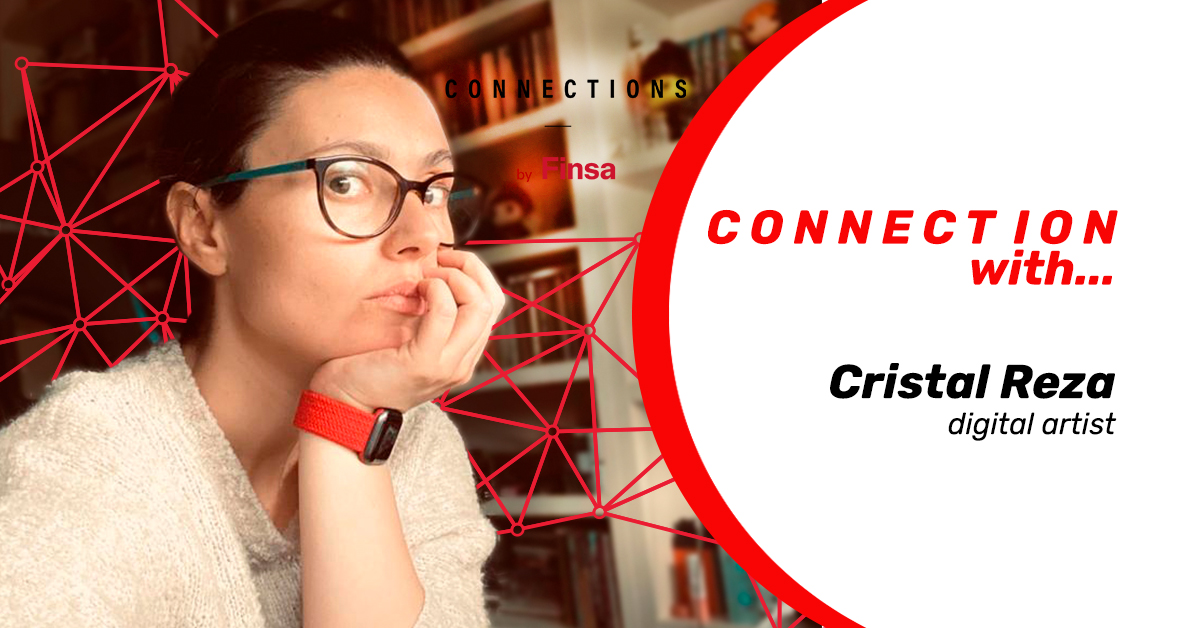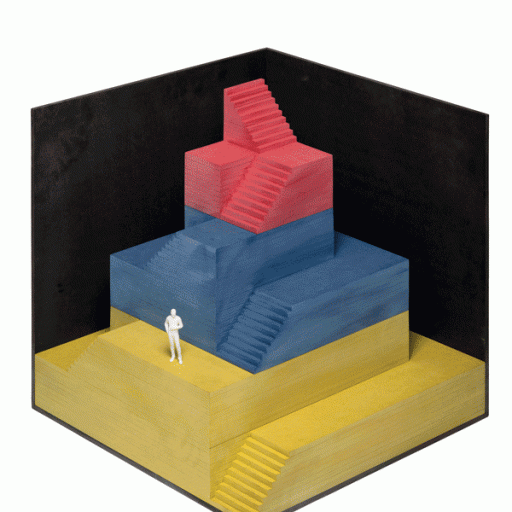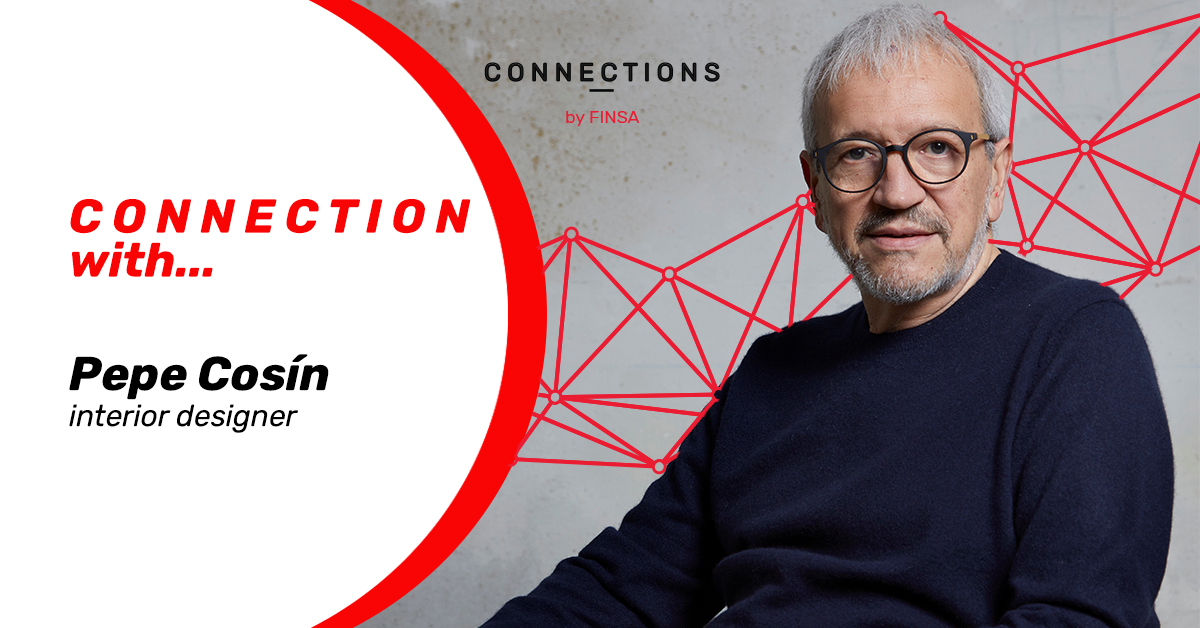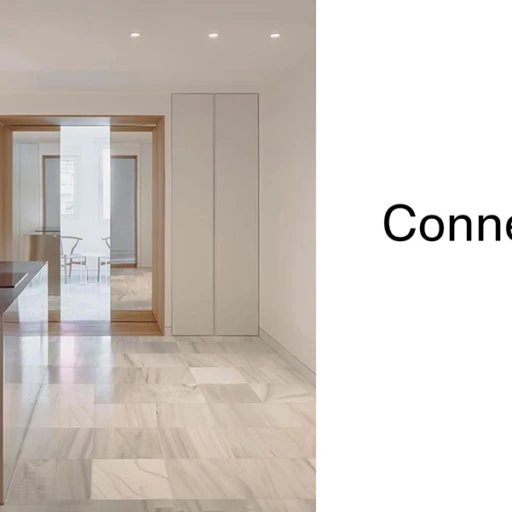The drivers behind Cristal Reza’s creativity are her imagination and her passion for colour and detail. Perhaps it’s because she has never stopped playing and because, with each piece, she continues to shape her fantasy world and feed the interest in technology that she has had ever since she was a child. The artist, who was born in Celanova, Ourense and has a growing international fanbase, enjoys coming up with something new through her digital designs.
 Facebook has acquired three of her pieces for the metaverse and she was also commissioned by American toy company Mattel and Vogue Italy to create a giant animated kaleidoscope as part of Milan Fashion Week, providing visitors with an immersive experience that surrounded them with mirrors showing images of iconic toys such as Barbie and Ken, Hot Wheels cars, and Fisher Price pieces. We CONNECTED WITH…Crista Reza in order to better understand her work and everything that inspires her artistic world.
Facebook has acquired three of her pieces for the metaverse and she was also commissioned by American toy company Mattel and Vogue Italy to create a giant animated kaleidoscope as part of Milan Fashion Week, providing visitors with an immersive experience that surrounded them with mirrors showing images of iconic toys such as Barbie and Ken, Hot Wheels cars, and Fisher Price pieces. We CONNECTED WITH…Crista Reza in order to better understand her work and everything that inspires her artistic world.
Have you always been creative?
I’m not sure. My father writes and my mother has always done arts and crafts, [and she creates] incredible things. And I remember painting things when I was little, but nothing that was exactly out of this world. But we’ve definitely always been interested in technology, because my parents bought our first computer and we played Monkey Island, one of the first adventure games to ever exist, as well as the Indiana Jones games, and we loved them. [We liked it] more so for the artistic aspect of it, which stimulated our imagination. My house is full of books and many of them are from the fantasy genre.
What was it like to work with Mattel and Vogue Italy? How did that collaboration come about? Were you surprised that they chose you?
Because everything is so digital now, the projects that I’m offered come about via social media, from Instagram and the more specialised design pages like Behance and Dribbble. This one caught my attention because Vogue called me and I thought it probably should have been Mattel, because of the play side of things, but anyway, it was fantastic. Then they told me that the people at Vogue had found lots of different artists on Instagram, made a list, and then passed it on to Mattel and Mattel decided [who they wanted to contact]. It was a joint decision. It was a very good experience. It was for a fashion event, but I worked more closely with the designers from Mattel and we spoke the same language.
Ver esta publicación en Instagram
What effect did you want to create with such a big and surreal kaleidoscope?
The kaleidoscope idea was actually theirs. They asked me what I thought of it, and I loved it. From there we looked at what could be done. Because it was a Mattel thing, I knew that it had to have really strong colours. What we did was allow people to enter the kaleidoscope and the world inside, because it’s a mix of the animations being reflected in the mirrors, but the visitor can also see themselves. You can’t see that from the outside.
Ver esta publicación en Instagram
Toys are definitely not just for kids, are they?
No, not at all, I like them a lot. The truth is that sometimes I see them and say “Gosh, I can’t buy that because it’s going to look really bad”, but there are some things [that I just can’t resist]. The imagination of toy creators fascinates me sometimes. In fact, there’s one toy I’ve never had, and I’ve always felt sad about not having one, and that’s the Polly Pocket. I loved them because you had a little shell that was the size of your hand, made of plastic of course, and when you opened it there was a little doll in it with her bedroom, her bathroom, a closet…it was great. And I can’t forget that, for people my age, there was the Tamagotchi. I loved all the electronic toys.
You continue to play through your artistic work, because it has a very playful side to it. You create incredible creatures, letters that make you want to squeeze them, sweets you want to eat, and all of it with lots of colour and very attractive textures.
I also design things that might not fit my personality as much [as the playful things], but even then there are lots of work things that I really enjoy making, especially because there comes a point at which, because people like what you’ve done, exactly as you’ve already done it, they ask you to do it again. You don’t have to adapt to their idea of you, rather they ask you for what you already do. So you keep playing a bit. And the colour thing is because I love it. That doesn’t mean that I don’t have some work in black and white and, in fact, I have plans for a piece just like that, but when I’m working with colours I say to myself, “no, no, it needs more”. It seems it’s never enough for me and, sometimes, I look at what I’ve done and think “I’ve gone too far”.
Ver esta publicación en Instagram
Your work is happy, it oozes positivity and good humour. It’s also vibrant and intense, but also very relaxing at the same time.
The pieces that are grounded in their own world and have their own background are one thing, but it’s absolutely incredible what you can do using 3D with those that have a completely white background that looks like a wall. With some of them, it seems like you could pick them up and take them with you. That becomes even more true when you put them on a big screen. When you have an idea and technology lets you bring it to life, when it lets you play with the mind of the viewer like that, it’s incredible, because it feels like you can pick the thing up and makes you want to touch it, or I’ll create something with hairs, and it looks like they would be soft. When that happens, it’s no longer just about whether [the viewer] likes it or not, rather you’re provoking sensations. [As the viewer], you’re looking at it and saying “wow, it’s so soft!”, but you actually don’t know if it is.
Ver esta publicación en Instagram
Ver esta publicación en Instagram
You often say that you are passionate about your work as a 3D designer because it keeps your imagination alive.
I really like comics, fantasy books, and science fiction, but sometimes it seems like they are ‘far away’. And since I’m never going to get to Mars, even though that’s something I’d love to do, I create a fantasy world here on Earth. Something I never used to do but that I started doing recently, (and that I’m not very good at yet, but everything in its own time) is putting sound on my animations. Not music, just sounds. Seeing them without sound is different to seeing them with sound, because it adds something and gives extra richness [to the image].
Digital art, digital fashion, digital toys…Are these new creative synergies the future?
I believe so, alongside other things, because I don’t rely solely on my art to make a living. I might be lucky enough to have people buy some of my work, but that doesn’t mean that designers like me don’t have to go where the clients are. And right now, clients want digital things and animation. It’s a great time [to be working in this field]. Everyone is gravitating towards it and a person that doesn’t have a mobile phone in their hand essentially doesn’t exist. But I still like traditional books, [I hope] they stick around even though we now have ebooks.
It’s funny because I have illustration books and comics on paper whose publication was announced online using animation of their covers. The way we advertise things has changed a lot. We’ve gone from having to create buzz in the press to advertisements on social media. The evolution has been extraordinary and it moves very quickly, so you either adapt or you die. You’ve got no choice.
Ver esta publicación en Instagram
Given the international recognition you’ve received, do you believe that your work is appreciated more outside of Spain?
I’m not sure. It’s true that my work comes from outside of Spain more often than it does from Spanish companies, but in the last few months I’ve been working quite a bit in Spain, too. But I don’t think it’s about working here or overseas, or whether you’re appreciated in your country or in others. We are already living in a completely global world, so when I publish something on Instagram, when I create something, I’m doing it for a global audience. It doesn’t matter where the artist is from. Sometimes I get work from the US, other times it comes from France, and sometimes from Barcelona. It all depends. I’ve never met most of the people I work with in real life and we live in the same country. And since the pandemic, it’s become even easier, and we saw that it’s possible to continue working [even if you aren’t in the same place as those you work with].
What does the metaverse mean to you? What do you think of this new world? ¿
I believe that, if you’re playing a video game, you’re already in the metaverse. It’s just that [the metaverse] contains lots of worlds. We want to see it like we did in Ready Player One, the Steven Spielberg movie in which the characters plugged in some goggles and were transported to another world, but the problem with that is there are lots of worlds, not just one. There is the world in which, if you want to create an avatar, it’s going to be in the style of Minecraft, all pixelated, but if you go to another world, you’ll have a different avatar. Meta has just released avatars that are created by recording you using 3D cameras, and they’re so realistic that you’re avatar will look just like you. So, the problem is that there isn’t just one world, there are lots of them.
Would you create an NFT?
I recently watched a very interesting talk at a university about digital art and the way it is reviled when compared to traditional art because, of course, you can create an oil painting and have it displayed in the Prado Museum, but if you make a really cool animation using digital materials, it’s as if it’s not good enough for that. It’s not fair and it doesn’t make sense. It’s just not logical.
What NFTs do is allow a digital artist to sell their work in the same way that a traditional visual artist does. I think that’s great. But the reality is that a copy is still the same as the original no matter what we like to think. So a piece of my work might have a serial number and belong to me and me only, but a copy is exactly the same as the original. However, you can’t copy a canvas and have it be exactly the same. You can take a photo of it, but it won’t have the same textures. There are a lot of characteristics [present in traditional art] that you can’t just recreate.
When it comes to the buying and selling of NFTs, I believe it has to evolve a lot more for it to be both profitable and logical. For me, it’s still just a copy. I have a lot of feelings about this. I know there are things being done to create a different approach [to NFTs]. There’s a French art school called ArtPoint that has a catalogue of artists, just like a traditional gallery, but they are all digital artists. And just like a traditional gallery might lend out a piece so that in can be exhibited somewhere else, this school does the same, but [instead of a lending out a canvas] the art will be displayed on something like the tv screen of a hotel. I think that’s pretty good, that digital artists can rent out their work to different spaces.
You were a graphic designer and you studied advertising. But when it comes to 3D, you’re completely self-taught. What has that evolution been like?
When I was doing my degree, there weren’t really any subjects that taught you how to design in 3D. I believe that I would have had to do a specific degree or a course at a technical school for that sort of thing, but I did advertising instead. But I’ve ended up where I wanted to be anyway.
I’ve always known that I wanted to do something creative, something in that realm, which is why I chose that branch of design and creativity. After that, I did what I had to do. The good thing is that there are lots of resources and lots of people that create tutorials and share them. It’s all about how you go about it because you can do what the others are doing, but creativity depends on the person. But the learning can all be done online! We must learn other ways of teaching, and they won’t necessarily be worse than traditional methods.
Ver esta publicación en Instagram
Have the other disciplines you studied helped you become the Cristal Reza, the digital artist that you are today?
Of course, because I learned a lot, like how to work with space, colour composition etc. Now I’m more focused on 3D, but I combine things a lot. Something you learn in advertising is that the foundation must always be the creativity that the job demands. It’s not just the idea or the concept, it’s how you use colours, the combinations you choose. But the people I follow because I like their work don’t just create 3D pieces, and when I create a moodboard to see different examples of things, there’s a bit of everything, from clothing to origami.
What interests you outside of the digital universe?
Lots of things, but the digital world interests me a lot. I’m a bit of a hermit. But I do love nature and I think that’s reflected in the things I do. Not just because I create mushrooms, but also the colours and textures [that I use]. I don’t like to use flat colours and nothing else. I want the colour to have texture, even if it’s a little bit gross or it looks like moss on a rock.




